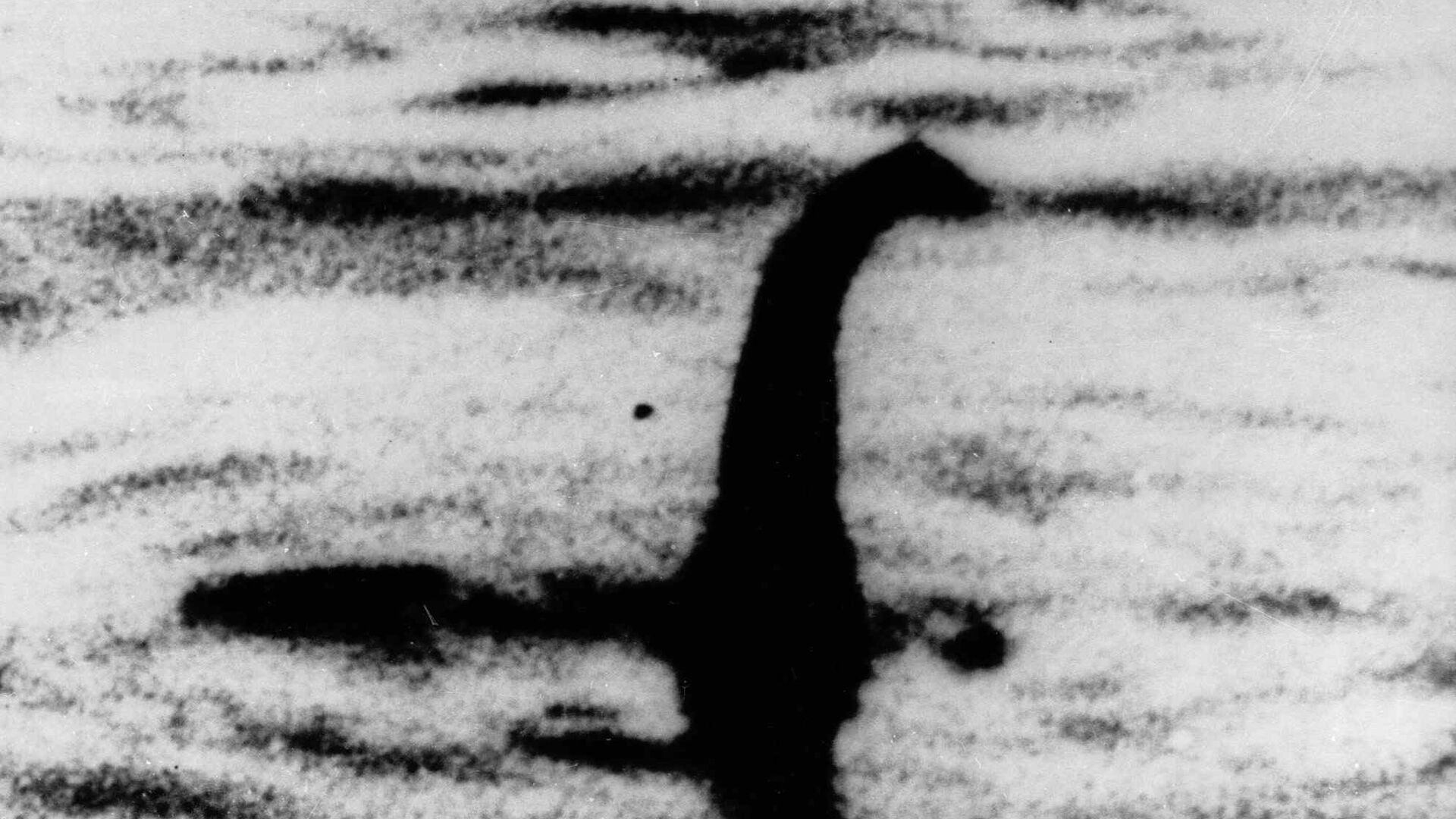https://sputnikglobe.com/20220727/fossil-find-shows-plesiosaurs-lived-in-freshwater-habitats-yes-like-loch-ness-1097848337.html
Fossil Find Shows Plesiosaurs Lived in Freshwater Habitats (Yes, Like Loch Ness)
Fossil Find Shows Plesiosaurs Lived in Freshwater Habitats (Yes, Like Loch Ness)
Sputnik International
Cryptozoologists and other enthusiasts of the paranormal have long speculated that the long-necked 'monster' sighted several times in Scotland's Loch Ness... 27.07.2022, Sputnik International
2022-07-27T11:51+0000
2022-07-27T11:51+0000
2022-07-27T13:52+0000
loch ness
loch ness monster
fossil
plesiosaur
morocco
https://cdn1.img.sputnikglobe.com/img/106302/77/1063027791_0:0:1988:1119_1920x0_80_0_0_955ce3d141df58a6707c509e921d052d.jpg
Palaeontologists have found that plesiosaurs inhabited freshwater environments — throwing crumbs of credibility to the belief the legendary Loch Ness monster is a living fossil.A recent find of fossils of the marine reptiles, which lived alongside the dinosaurs until both died out during the same mass extinction 66 million years ago, indicates they could also live in rivers.The petrified remains, discovered in the beds of a 100 million-year-old river system long since covered by the Sahara desert, show they lived alongside Spinosaurus, the monstrous, sail-backed, crocodile-jawed predator related to Tyrannosaurus rex.They found bones and teeth from a 3-metre-long adult and a limb bone from a 1.5-metre youngster.Patterns of wear on the' plesiosaurs fossilised teeth indicate that they were not just occasional visitors to rivers, but regularly fed on the same heavily-armoured ancient fish as Spinosaurus. "We don’t really know why the plesiosaurs are in freshwater," said the paper's corresponding author Dr Nick Longrich. "It’s a bit controversial, but who’s to say that because we palaeontologists have always called them ‘marine reptiles’, they had to live in the sea? Lots of marine lineages invaded freshwater."Cryptozoologists and other enthusiasts of the paranormal have long speculated that the long-necked 'monster' sighted several times in Scotland's Loch Ness could be members of a surviving population of plesiosaurs.That had previously been dismissed on the basis that — despite the ancient reptiles disappearing from the fossil record tens of millions of years ago — their fossils have only been found in marine habitats.The University of Bath conceded in a press release that the newly-discovered fossils said the theory was "on one level, plausible," as it proved “Plesiosaurs weren’t confined to the seas, they did inhabit freshwater."The comparison was first made by veterinary student Arthur Grant, who claimed to have almost hit the legendary beast while riding his motorcycle towards Abriachan near the north-eastern end of the Loch at 1 am on January 5, 1934. Grant described the apparition he saw waddling across the road as a cross between a seal and a plesiosaur, and drew a sketch of the alleged creature.Earlier claimed sightings and since-debunked photographs of 'Nessie' depicted it as a classic mythical sea-serpent, with a long eel-like body snaking in and out of the chilly waters of the loch.Plesiosaurs had small heads atop long necks, barrel-shaped torsos and four sealion-like flippers for swimming.The order of marine reptiles lived from 203 million to 66 million years ago, coinciding with the reign of the dinosaurs. They were members of the super-order Sauropterygia which included the Ichthyosaurs, which resembled modern dolphins, and the turtle-like Placodontia.The first plesiosaur was discovered in Britain, albeit on the south-west English Channel coast by famous fossil-hunter Mary Anning in 1823, at the Dorset seaside town of Lime Regis on the 'Jurassic Coast'.
https://sputnikglobe.com/20220430/watch-best-video-of-nessie-in-20-years-shows-mysterious-object-lurking-in-loch-ness-waters-1095160509.html
loch ness
morocco
Sputnik International
feedback@sputniknews.com
+74956456601
MIA „Rosiya Segodnya“
2022
James Tweedie
https://cdn1.img.sputnikglobe.com/img/07e4/08/1c/1080307270_0:3:397:400_100x100_80_0_0_7777393b9b18802f2e3c5eaa9cbcc612.png
James Tweedie
https://cdn1.img.sputnikglobe.com/img/07e4/08/1c/1080307270_0:3:397:400_100x100_80_0_0_7777393b9b18802f2e3c5eaa9cbcc612.png
News
en_EN
Sputnik International
feedback@sputniknews.com
+74956456601
MIA „Rosiya Segodnya“
Sputnik International
feedback@sputniknews.com
+74956456601
MIA „Rosiya Segodnya“
James Tweedie
https://cdn1.img.sputnikglobe.com/img/07e4/08/1c/1080307270_0:3:397:400_100x100_80_0_0_7777393b9b18802f2e3c5eaa9cbcc612.png
loch ness, loch ness monster, fossil, plesiosaur, morocco
loch ness, loch ness monster, fossil, plesiosaur, morocco
Fossil Find Shows Plesiosaurs Lived in Freshwater Habitats (Yes, Like Loch Ness)
11:51 GMT 27.07.2022 (Updated: 13:52 GMT 27.07.2022) Cryptozoologists and other enthusiasts of the paranormal have long speculated that the long-necked 'monster' sighted several times in Scotland's Loch Ness could be members of a surviving population of plesiosaurs, which were wiped out along with the dinosaurs 66 million years ago.
Palaeontologists have found that plesiosaurs inhabited freshwater environments — throwing crumbs of credibility to the belief the legendary
Loch Ness monster is a living fossil.
A recent find of fossils of the marine reptiles, which lived alongside the dinosaurs until both died out during the same mass extinction 66 million years ago, indicates they could also live in rivers.
The petrified remains, discovered in the beds of a 100 million-year-old river system long since covered by the Sahara desert, show they lived alongside Spinosaurus, the monstrous, sail-backed, crocodile-jawed predator related to Tyrannosaurus rex.
They found bones and teeth from a 3-metre-long adult and a limb bone from a 1.5-metre youngster.
Patterns of wear on the' plesiosaurs fossilised teeth indicate that they were not just occasional visitors to rivers, but regularly fed on the same heavily-armoured ancient fish as Spinosaurus.
"What amazes me is that the ancient Moroccan river contained so many carnivores all living alongside each other," said the paper's co-author Dave Martill, professor of palaeobiology at the University of Bath. "This was no place to go for a swim."
"We don’t really know why the plesiosaurs are in freshwater," said the paper's corresponding author Dr Nick Longrich. "It’s a bit controversial, but who’s to say that because we palaeontologists have always called them ‘marine reptiles’, they had to live in the sea? Lots of marine lineages invaded freshwater."
Cryptozoologists and other
enthusiasts of the paranormal have long speculated that the long-necked 'monster' sighted several times in Scotland's Loch Ness could be members of a surviving population of plesiosaurs.
That had previously been dismissed on the basis that — despite the ancient reptiles disappearing from the fossil record tens of millions of years ago — their fossils have only been found in marine habitats.
The University of Bath conceded in a press release that the newly-discovered fossils said the theory was "on one level, plausible," as it proved “Plesiosaurs weren’t confined to the seas, they did inhabit freshwater."
The comparison was first made by veterinary student Arthur Grant, who claimed to have almost hit the legendary beast while riding his motorcycle towards Abriachan near the north-eastern end of the Loch at 1 am on January 5, 1934. Grant described the apparition he saw waddling across the road as a cross between a seal and a plesiosaur, and drew a sketch of the alleged creature.
Earlier claimed sightings and since-debunked photographs of 'Nessie' depicted it as a classic mythical sea-serpent, with a long eel-like body snaking in and out of the chilly waters of the loch.
Plesiosaurs had small heads atop long necks, barrel-shaped torsos and four
sealion-like flippers for swimming.
The order of marine reptiles lived from 203 million to 66 million years ago, coinciding with the reign of the dinosaurs. They were members of the super-order Sauropterygia which included the Ichthyosaurs, which resembled modern dolphins, and the turtle-like Placodontia.
The first plesiosaur was discovered in Britain, albeit on the south-west English Channel coast by famous fossil-hunter Mary Anning in 1823, at the Dorset seaside town of Lime Regis on the 'Jurassic Coast'.





